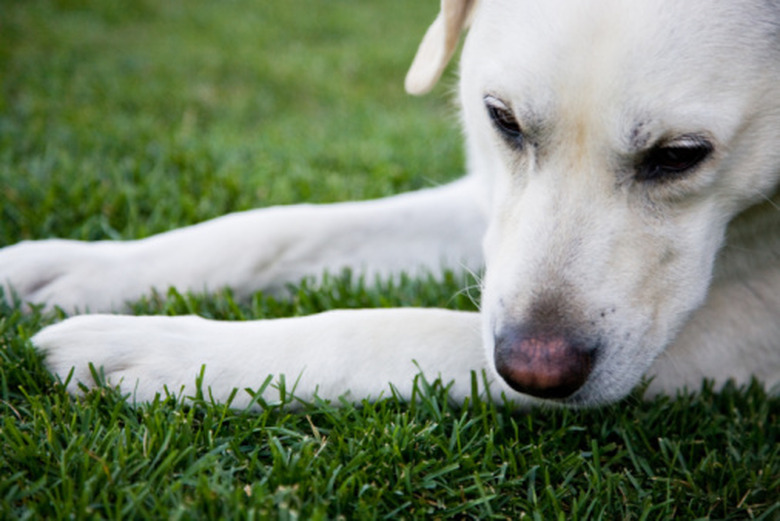How Long Before You Can Walk On Grass Seed?
We may receive a commission on purchases made from links.
Seeding is probably the most efficient way to plant a new lawn, taking much less effort than vegetative methods such as sodding or plugging, but new seeds are fragile and easily damaged by foot traffic, so it's important to know how long to wait before you can walk on grass seed. As a rule, you should plan to stay off a newly seeded lawn for at least a month (eight to 12 weeks is better), and you should cordon off the area and post signs to encourage everyone else to do the same. If you're reseeding an existing lawn, the fresh seed isn't as exposed, but it's still fragile enough to warrant staying off the lawn for 30 days.
Tip
After seeding, stay off the lawn for one to three months depending on the grass variety.
Seeding a Brand-New Lawn
Seeding a Brand-New Lawn
Although it's important to stay off a newly seeded lawn, it's even more important to keep it moist because the new seeds will quickly die if they dry out. For this reason, homeowners in northern growing zones and in the transition zone should avoid the hot midsummer sun by sowing in the early fall at least eight weeks before the first frost to give the grass time to get established before it goes into winter dormancy. In southern zones, late fall and early spring are both good times to plant.
To ensure the soil remains moist enough for the seeds to germinate, mulching is usually a good idea but be careful about what you use. You can use peat moss, paper or straw, but straw from the local feed store often contains weeds, so be sure you purchase a product that is guaranteed to be weed-free, such as E-Z Straw. This biodegradable product will eventually become part of the soil, but it will still be intact when the grass starts to sprout. When the grass starts poking through it and the overall color of the lawn takes on a greenish tinge, it's usually safe to walk on it.
How to Keep Grass Watered
How to Keep Grass Watered
New grass seed has to be watered regularly, sometimes several times a day depending on the climate, type of soil, time of year, and the amount of rainfall. The soil should be moist to the touch at all times, or the seeds won't be able to germinate, and if your lawn covers a large area, that presents the problem of how to water without walking on the grass. With a conventional hose nozzle and typical residential water pressure, you can often reach all parts of the lawn from the perimeter, but if there's a spot you can't reach, you may have to deploy a sprinkler. Do this immediately after sowing the seed or even before to avoid having to traipse over the fresh grass seed.
Most Vulnerable Time
Most Vulnerable Time
After sowing fresh grass seed, you may have to roll the lawn with a roller if the soil is loose or work the seed into the soil with a verticutter if the soil is compacted, and neither of these operations will harm the seeds. The grass is at its most vulnerable when the seeds begin to germinate, which can happen seven to 21 days after sowing depending on the grass variety. Bermudagrass (Cynodon dactylon, USDA zones 6-9) germinates quickly, while tall fescue (Festuca arundinacea, zones 3-6) and Kentucky bluegrass (Poa pratensis, zones 3-9) take the longest. Immediately after germination, the roots are young and fragile, and they remain so until the blades are 2 to 3 inches tall.
References
- Virginia Cooperative Extension: Establishing Lawns
- Sunday: Caring for a Newly Seeded Lawn
- Ryan Lawn: How to Care for Your Newly Seeded Lawn
- Turf Online: How Soon Can I Use My New Lawn?
- Turfgrass Science at Purdue University: Tall Fescue
- Turfgrass Science at Purdue University: Common Bermudagrass
- Turfgrass Science at Purdue University: Which Is It, Annual Bluegrass or Kentucky Bluegrass?
